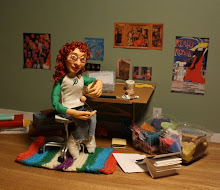If a parent can't take the time to skim a book to see whether it is appropriate for their child, there are other options to age branding (besides, do you really want publishers to decide the age range of a book? These are publishers who wouldn't believe that Coraline was intended for children). Librarians, authors, and independent booksellers are more than happy to give parents book lists and advice. Librarians especially can gain a better understanding of what your child enjoys and their level simply by talking to you or your child- something publishers cannot.
Furthermore, how to you age rank something? Complexity of language? This makes older books for older readers. Issues? This makes older books for younger readers. What about the fact that few children of the same age actually read at the same level and are of the same maturity? How do you rank Rushdie's Haroun & the Sea of Stories? (the only answer can be crossover)
Perhaps we should remove age-est views from books, as they already exist in so many other facets of our society. This can only help children relate to those other than their schoolmates.

No comments:
Post a Comment